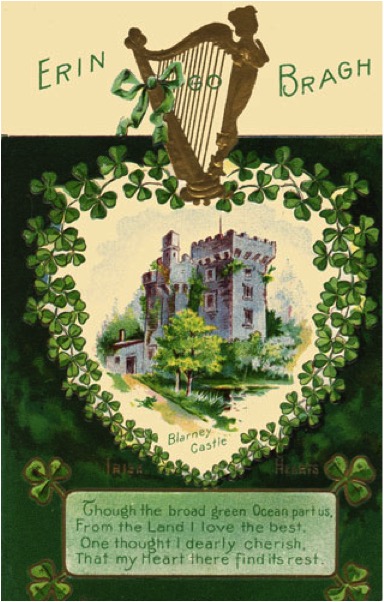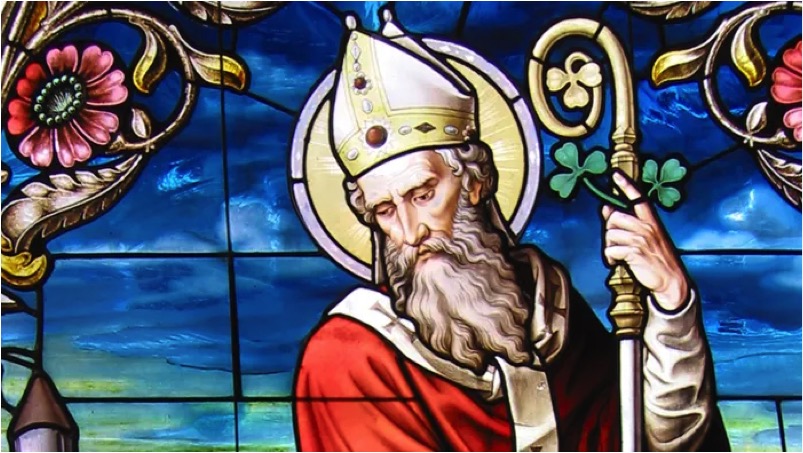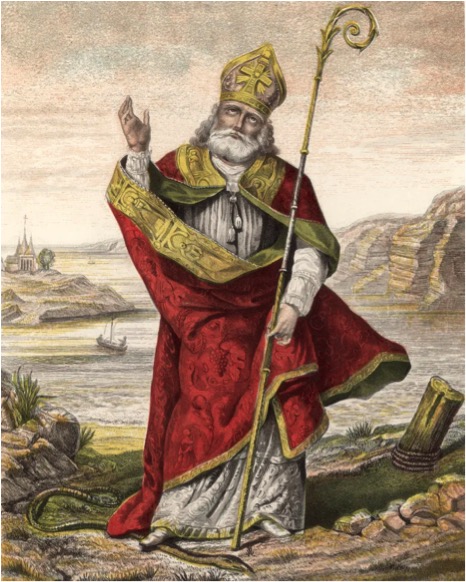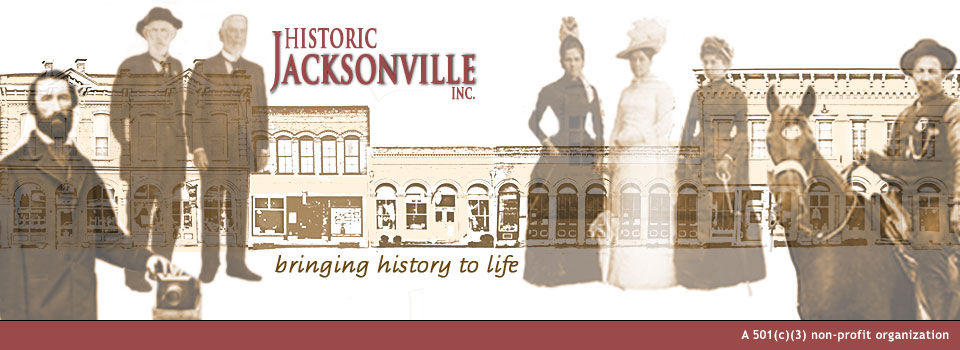
What’s New: Holiday History
St. Patrick’s Day
Although St. Patrick’s Day, has never been a major holiday, it has become a day to fete all things Irish. Regardless of your racial or ethnic origins, on March 17theveryone is “Irish,” joining in the celebration of this rich Celtic culture. So who was St. Patrick and how did this come about?
Much of what is known about St. Patrick’s life has been interwoven with folklore and legend. Historians generally believe that St. Patrick, the patron saint of Ireland, was born in Britain (not Ireland) near the end of the 4th century. At age 16 he was kidnapped by Irish raiders and sold as a slave to a Celtic priest in Northern Ireland. After toiling for six years as a shepherd, he escaped back to Britain. He eventually returned to Ireland as a Christian missionary and is credited with bringing Christianity to the Irish people, using traditional Irish culture to describe the tenets of Christianity.
 Stained Glass Image of St. Patrick
Stained Glass Image of St. Patrick
In the centuries following Patrick’s death (believed to have been on March 17, 461), the mythology surrounding his life became ever more ingrained in the Irish culture. Perhaps the most well-known legend of St. Patrick is that he explained the Holy Trinity (Father, Son and Holy Spirit) using the three leaves of a native Irish clover, the shamrock.
It was also his idea to place a sun–a common symbol in Ireland– onto the Christian cross, so it would seem more natural to the Irish. This became what is known as the Celtic cross.
 Painting of St. Patrick with Foot on Snake Painting of St. Patrick with Foot on Snake |
St. Patrick apparently was and did many things, but he did not banish the snakes from Ireland. Research suggests that snakes never occupied the Emerald Isle in the first place. There are no signs of snakes in the country’s fossil record. Water has surrounded Ireland since the last glacial period and before that, the region was covered in ice and would have been too cold for reptile
From around the ninth or 10th century, people in Ireland have been observing the Roman Catholic feast day of St. Patrick on March 17. On St. Patrick’s Day, which falls during the Christian season of Lent, Irish families would traditionally attend church in the morning and celebrate.
In the afternoon. Lenten prohibitions against the consumption of meat were waived and people would dance, drink, and feast on the traditional meal of Irish bacon and cabbage.
While people in Ireland celebrated St. Patrick from the 1600s, the tradition of a St. Patrick’s Day parade began in America and actually predates the founding of the United States. Records show that a St. Patrick’s Day parade was held on March 17, 1601, in a Spanish colony in what is now St. Augustine, Florida. The parade, and a St. Patrick’s Day celebration a year earlier, were organized by the Spanish Colony’s Irish vicar Ricardo Artur.
More than a century later, homesick Irish soldiers serving in the English military marched in New York City on March 17, 1772, to honor the Irish patron saint. Enthusiasm for the St. Patrick’s Day parades in New York City, Boston, and other early American cities only grew from there.
Over the next 35 years, Irish patriotism among American immigrants flourished, prompting the rise of so-called “Irish Aid” societies like the Friendly Sons of Saint Patrick and the Hibernian Society. Each group would hold annual parades featuring bagpipes (which actually first became popular in the Scottish and British armies) and drums.
In 1848, several New York Irish Aid societies decided to unite their parades to form one official New York City St. Patrick’s Day Parade. Today, that parade is the world’s oldest civilian parade and the largest in the United States, with over 150,000 participants. Each year, nearly 3 million people line the 1.5-mile parade route to watch the procession, which takes more than five hours. Boston, Chicago, Philadelphia and Savannah also celebrate the day with parades involving between 10,000 and 20,000 participants each. In 2020, the New York City parade was one of the first major city events to be cancelled as a result of the COVID-19 pandemic.
 New York City 1895 St. Patrick’s Day Parade. Photo Source: Museum of the City of New York.
New York City 1895 St. Patrick’s Day Parade. Photo Source: Museum of the City of New York.
Up until the mid-19th century, most Irish immigrants in America were members of the Protestant middle class. When the Great Potato Famine hit Ireland in 1845, close to 1 million poor and uneducated Irish Catholics began pouring into America to escape starvation.
Despised for their alien religious beliefs and unfamiliar accents by the American Protestant majority, the immigrants had trouble finding even menial jobs. When Irish Americans in the country’s cities took to the streets on St. Patrick’s Day to celebrate their heritage, newspapers portrayed them in cartoons as drunk, violent monkeys.
The American Irish soon began to realize, however, that their large and growing numbers endowed them with a political power that had yet to be exploited. They started to organize, and their voting block, known as the “green machine,” became an important swing vote for political hopefuls. Suddenly, annual St. Patrick’s Day parades became a show of strength for Irish Americans, as well as a must-attend event for a slew of political candidates.
In 1948, President Harry S. Truman attended New York City‘s St. Patrick’s Day parade, a proud moment for the many Irish Americans whose ancestors had to fight stereotypes and racial prejudice to find acceptance in the New World.
As Irish immigrants spread out over the United States, other cities developed their own traditions. One of these is Chicago’s annual dyeing of the Chicago River green.
The practice started in 1962, when city pollution-control workers used dyes to trace illegal sewage discharges and realized that the green dye might provide a unique way to celebrate the holiday. That year, they released 100 pounds of green vegetable dye into the river – enough to keep it green for a week. Today, in order to minimize environmental damage, only 40 pounds of dye are used, and the river turns green for only several hours
Although Chicago historians claim their city’s idea for a river of green was original, some natives of Savannah, Georgia (whose St. Patrick’s Day parade dates back to 1813) believe the idea originated in their town. They point out that, in 1961, a hotel restaurant manager named Tom Woolley convinced city officials to dye Savannah’s river green. The experiment didn’t exactly work as planned, and the water only took on a slight greenish hue. Savannah never attempted to dye its river again, but Woolley maintains (though others refute the claim) that he personally suggested the idea to Chicago’s Mayor Richard J. Daley.
Although we have found no records of 19thCentury Jacksonville observations of St. Patrick’s Day, there were certainly Irish pioneers and settlers—P. J. Ryan, Patrick Donegan, John Guilfoyle, Jeremiah Nunan, Delia O’Grady Nunan, Ellen Orth, William Turner, and Patrick McMahon to name a few. From Massachusetts to San Francisco, our American ancestors celebrated St. Patrick’s Day in many ways that mirror current modern observations.
The “holiday” has morphed in the last 150 years to a celebration of Irish culture. Across the country – East to West, large cities to small villages – St. Paddy’s Day celebrations have tended to include the wearing of the green, shamrocks, Irish food, parades, speeches, performances, ball games, fireworks, and balls.
 Today, people of all backgrounds celebrate St. Patrick’s Day, especially throughout the United States, Canada, and Australia. Although North America is home to the largest productions, St. Patrick’s Day is celebrated around the world in locations far from Ireland, including Japan, Singapore and Russia. Popular St. Patrick’s Day recipes include Irish soda bread, and corned beef and cabbage.
Today, people of all backgrounds celebrate St. Patrick’s Day, especially throughout the United States, Canada, and Australia. Although North America is home to the largest productions, St. Patrick’s Day is celebrated around the world in locations far from Ireland, including Japan, Singapore and Russia. Popular St. Patrick’s Day recipes include Irish soda bread, and corned beef and cabbage.
Even if you skip the corned beef and cabbage, be sure to flaunt your “green” on March 17!
Sources Cited:
https://www.history.com/topics/st-patricks-day/history-of-st-patricks-day
https://countryandvictoriantimes.com/2011/02/20/victorian-history-of-st-patricks-day/
http://www.kristinholt.com/archives/3821

